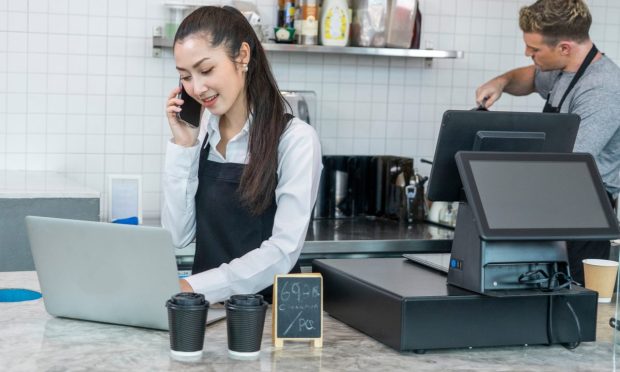Voice Ordering AI Enables Restaurants to Meet Demand

Since the start of the pandemic, many restaurants have seen great success taking their menus online, offering off-premise ordering via digital platforms. In a challenging labor market, these ordering channels provide a more efficient option for restaurants, enabling consumers to act as their own order taker.
Yet, for all brands’ efforts to incentivize adoption by making these channels as convenient and intuitive as possible, many consumers still prefer to call their order in via phone, the old-fashioned way. The ongoing popularity of phone ordering poses challenges for restaurants at a time when there is not always time to answer all the calls coming in.
Victor Matchie, owner of Aloha, Oregon-based sandwich chain Monkey’s Subs, spoke with PYMNTS about how the company’s conversational artificial intelligence (AI) voice assistant, from speech recognition company SoundHound, enables the restaurant to meet this demand without the bottlenecks that can otherwise result from call-in orders at peak times.
“On the customer end, there’s no waiting in line, being put on hold, or being lost on hold when we get too busy,” he said. “It’s especially helpful when we have multiple orders or phone calls coming in; no one needs to be put on hold, and the people standing in line don’t have to wait for us to stop and answer the phone. If two or more people call at the same time, it’ll process both the orders simultaneously.”
By the Numbers
Adoption of online ordering channels has grown astronomically since March 2020. Matchie noted that while the restaurant saw “basically 3-4% online orders in early 2020,” now nearly half of all the restaurant’s customers order via digital channels.
Still, in spite of this exponential increase in digital ordering, many restaurant customers continue to call in their orders even when online options are available. In fact, at restaurants with table service, off-premise ordering via phone call remains even more popular than ordering online.
In fact, research from PYMNTS’ November report, “Digital Divide: Aggregators and High-Value Restaurant Customers,” created in collaboration with Paytronix, which drew from a September survey of more than 2,200 U.S. adults, found that 39% of full-service restaurant (FSR) customers had ordered via phone call in the previous three months, while just a slightly smaller share (38.9%) had ordered via restaurants’ direct digital ordering channels in the same period. Plus, only 17.4% had ordered online via a third-party aggregator.
Meanwhile, when it comes to quick-service restaurants (QSRs), phone ordering also remains highly popular, but slightly less so than direct digital ordering. Specifically, 42.7% of QSR customers reported ordering via phone in the previous three months, compared to the 44.5% who had ordered via restaurants’ own digital channels and the 22.7% who had ordered via a third-party aggregator.
Read more: Restaurants Fight Back Against Aggregators With Promotions and Loyalty Programs
Hold the Phone
Matchie recalled that, in the past, the company would experience call-in order backlogs that could lead to customer frustrations, which in turn risked alienating diners.
“Occasionally, a customer would come in and let us know that they had been trying to call in for the last hour and our phone was off the hook,” he said. “That was a continuous problem that we were having, because we got too busy and would lose customers.”
Additionally, he related his own experience on the other side of the transaction, noting that, “a couple of weeks ago,” he was towards the front of the line at a restaurant but was held up when the employee at the front took a call.
“She stayed on the phone for four or five minutes while we all stood and waited,” he said. “It wasn’t a great experience.”
He added that other challenges related to call-in orders include losing customers’ orders due to poor reception on the customer’s side or to other difficulties hearing.
Back to Basics
Matchie predicted that as restaurants add AI capabilities to help them process call-in orders, phone ordering will grow increasingly popular, just as improvements to the digital ordering experience made online ordering more common.
“There’s been a big shift [to digital ordering],” he said, “and I think with the voice ordering assistant, there’s going to be another shift.”
He contended that the technology not only makes the channel more efficient for restaurants but also improves the experience for consumers, bringing the easy pickup experience they have come to expect for their digital orders to the phone ordering process.
“With phone orders, previously customers would have to wait in line to pick up their sandwich,” Matchie said. “With the voice ordering assistant taking the order and the customer clicking a link to pay with a credit card, we only need to make the food and then place it out in front where everyone else picks up their orders. …They just grab the order, and they’re off on their way.”
